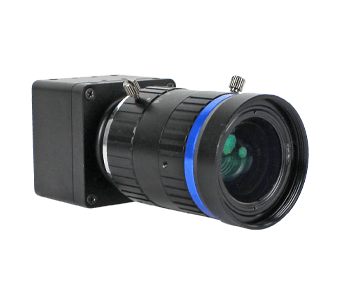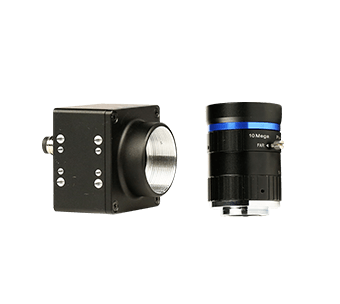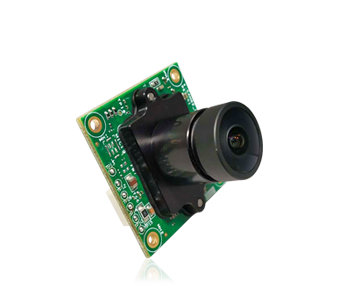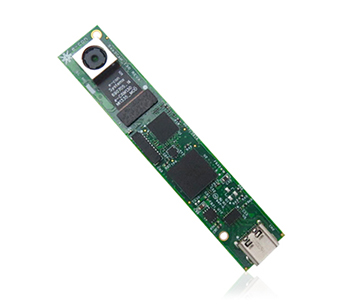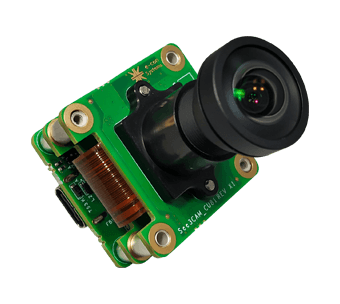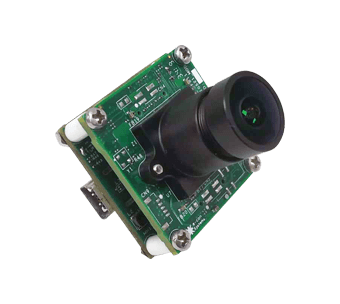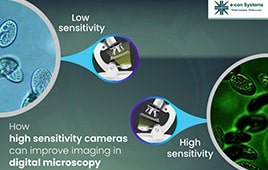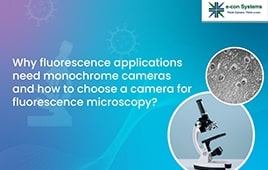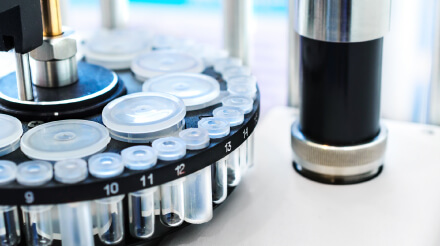
Unlock a new dimension of analysis by integrating cameras into In-vitro Diagnostic (IVD) devices
Cameras are becoming increasingly important in in-vitro diagnostic (IVD) devices. IVD devices are medical devices that are used to diagnose samples from the human body, such as blood, urine, and tissue. Cameras can provide more information about samples than other technologies, and they can be used to automate the analysis of samples. This can improve the accuracy and speed of diagnosis, and it can make IVD devices more portable. The use of cameras in IVD devices is growing rapidly, and as cameras continue to improve, they will play an even greater role in the diagnosis and treatment of diseases.
The usage of cameras in IVD devices are majorly segmented into 4 categories,
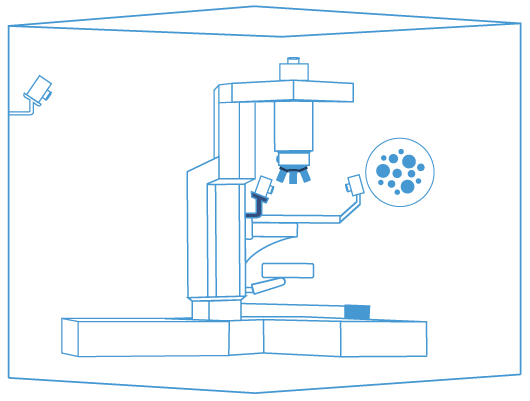
Primary Cameras
The primary camera in IVD devices is a vital tool for imaging samples and specimens for generating scientific data for analysis and diagnosis....
Learn MoreMonitoring cameras
Monitoring cameras help in providing real-time visual feedback of the diagnostic workflow within In-vitro diagnostic (IVD) devices.....
Learn MoreSmart Cameras
Smart cameras have become an integral part of the In-vitro diagnostic (IVD) industry. They are being used to automate a variety of pre-analytical tasks.....
Learn MoreThe primary camera in IVD devices is a vital tool for imaging samples and specimens for generating scientific data for analysis and diagnosis. This camera acts as the "eyes" of the In-vitro diagnostic (IVD) devices. It uses advanced imaging technologies to capture high-quality images that provide insights into the composition, structure, and characteristics of the samples or specimens. This allows healthcare professionals and researchers to unlock a wealth of information hidden within the samples or specimens, leading to more accurate diagnoses and better treatment outcomes.
Key imaging requirement
To meet the demanding imaging needs of IVD devices, the camera must possess certain key features and capabilities. These requirements ensure optimal image quality, precise data capture, and reliable analysis.
Large Sensor and Pixel size - Captures detailed information from the samples

High Dynamic Range - Accurately represents a wide range of brightness levels in samples

Low noise and high SNR - Minimizes image artifacts and noise
Solutions
e-con Systems offers a range of cameras specifically designed for IVD devices, leveraging cutting-edge technologies to meet the key imaging requirements. The Sony Pregius and Sony Starvis-based cameras are excellent choices, delivering exceptional image quality and performance.
- Available in both color and monochrome variants
- Support for USB and MIPI CSI-2 interfaces
- Software development kit (SDK) compatible with all major platforms
- Delivers high frame rates at high resolutions
Monitoring cameras help in providing real-time visual feedback of the diagnostic workflow within In-vitro diagnostic (IVD) devices. These cameras ensure proper sample handling, positioning, and movement, contributing to the accuracy and efficiency of the diagnostic process.
Key imaging requirement
When selecting a camera for monitoring processes or samples in an IVD device, manufacturers prioritize the following factors:

Easy integration – Multiple interfaces and optics

Low power and small form factor

Support for external illumination and control
Solutions
e-con Systems offers a range of camera solutions that cater to these key imaging requirements which will be beneficial for monitoring samples or process in in-vitro diagnostic devices .
With multiple products available based on the image sensors from Sony, Onsemi, and Omnivision, and supporting various interfaces such as USB, MIPI, GMLS, FPD, Ethernet, and WIFI, e-con Systems provides versatile options for monitoring the process or samples in IVD.
Smart cameras have become an integral part of the In-vitro diagnostic (IVD) industry. They are being used to automate a variety of pre-analytical tasks, such as identifying vial caps or sample color, recognizing sample volume or liquid level, detecting vial presence/absence, identifying position, classifying shapes, and counting items. By automating these tasks, smart cameras can help to reduce human error and ensure consistent and reliable results.
Key imaging requirement
When integrating cameras into IVD devices, several key requirements should be considered.

Enables real-time decision-making

Minimizes the risk of data privacy violations

Cost and power efficient
Solutions
To fulfill these requirements, e-con Systems offers camera solutions designed to meet the needs of the automating the pre-analytical tasks in IVD devices. These solutions include,
- Camera integrated with AI engine
- Performance up to 26 TOPs
- Supports frameworks like TensorFlow Lite Micro, and DeepviewRT
Our patient care device-friendly cameras
| Product | Image Sensor | Resolution | Interface | Shutter Type | Chroma | Frame Rate | Application |
|---|---|---|---|---|---|---|---|
| See3CAM_50CUG | IMX264 | 5.0 MP | USB 3.0/2.0 | Rolling | Color | 140FPS | Primary camera |
| See3CAM_50CUGM | IMX264 | 5.0 MP | USB 3.0/2.0 | Rolling | Monochrome | 145FPS | Primary camera |
| e‑CAM121_CUMI412C_MOD | IMX412 | 12.3 MP | MIPI CSI-2 | Rolling | Color | 240FPS | Primary camera |
| e-CAM120_CUMI477C_MOD | IMX477 | 12.3 MP | MIPI CSI-2 | Rolling | Color | 240FPS | Primary camera |
| e-CAM86_CUMI715C_MOD | IMX715 | 8.0 MP | MIPI CSI-2 | Rolling | RAW Bayer | 90FPS | Primary camera |
| e-CAM84_CUMI485C_MOD | IMX485 | 8.0 MP | MIPI CSI-2 | Rolling | Color | 90FPS | Primary camera |
| See3CAM_CU27 | IMX462 | 2.0 MP | USB 3.0/2.0 | Rolling | Color & NIR | 100FPS | Primary and Monitoring Camera |
| e-CAM82_USB | IMX415 | 8.0 MP | USB 2.0 | Rolling | Color | 60FPS | Primary and Monitoring camera |
| Hyperyon® | IMX290 | 2.0 MP | USB 2.0 | Rolling | Color | 60FPS | Primary camera |
| See3CAM_160 | IMX298 | 16.0 MP | USB 3.0/2.0 | Rolling | Color | 30FPS | Monitoring camera |
| See3CAM_130 | AR1335 | 13.0 MP | USB 3.0/2.0 | Rolling | Color | 120FPS | Monitoring camera |
| See3CAM_CU81 | AR0821 | 8.0 MP | USB 3.0/2.0 | Rolling | Color | 60FPS | Monitoring camera |
| See3CAM_CU512M | AR0522 | 5.0 MP | USB 3.0/2.0 | Rolling | Mono & NIR | 60FPS | Monitoring camera |
| See3CAM_CU55 | AR0521 | 5.0 MP | USB 3.0/2.0 | Rolling | Color | 60FPS | Monitoring camera |
| See3CAM_CU20 | AR0230 | 2.0 MP | USB 3.0/2.0 | Rolling | Color | 60FPS | Monitoring camera |
| EdgeECAM50_USB | AR0521 | 5.0 MP | USB 2.0 | Rolling | Color | 30FPS | Smart camera |
Related Articles and Blogs
Related Case Study
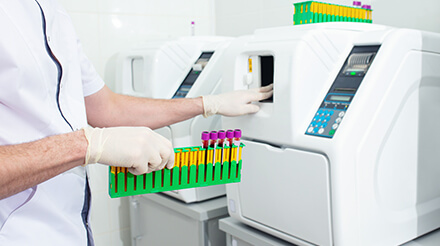
Helping build an AI-enabled in-vitro diagnostic device
How e-con Systems empowered a global clinical laboratory automation pioneer to unlock the power of AI vision to analyze biological samples.
View Case Study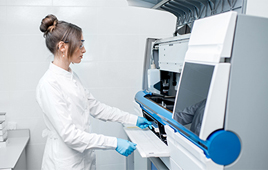
Helping develop and deploy a multi-camera system
How e-con Systems enabled a top diagnostic company to effectively perform real-time PCR tests with a multi-camera solution.
View Case Study


 Mr. Thomas Yoon
Mr. Thomas Yoon +82-10-5380-0313
+82-10-5380-0313



